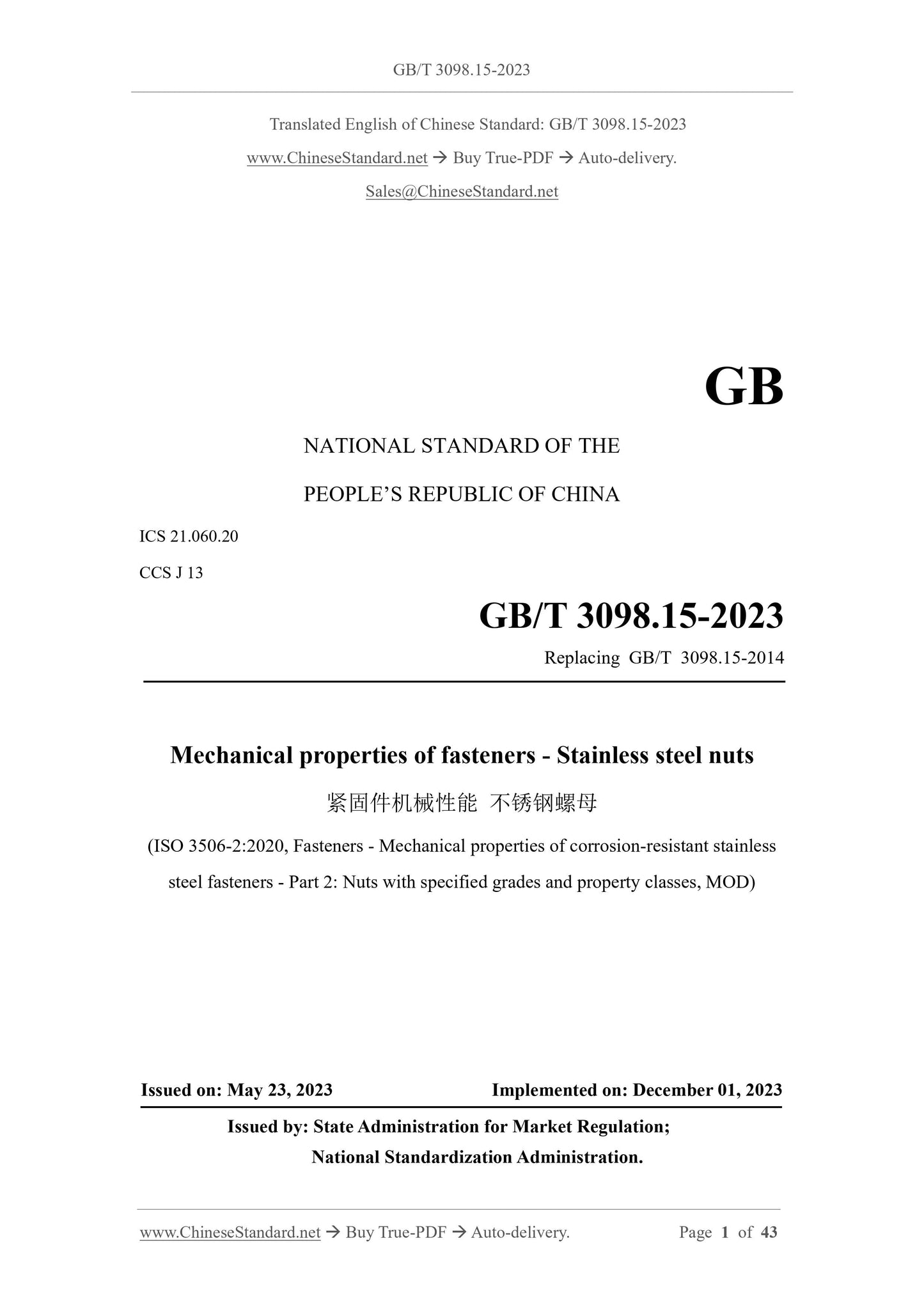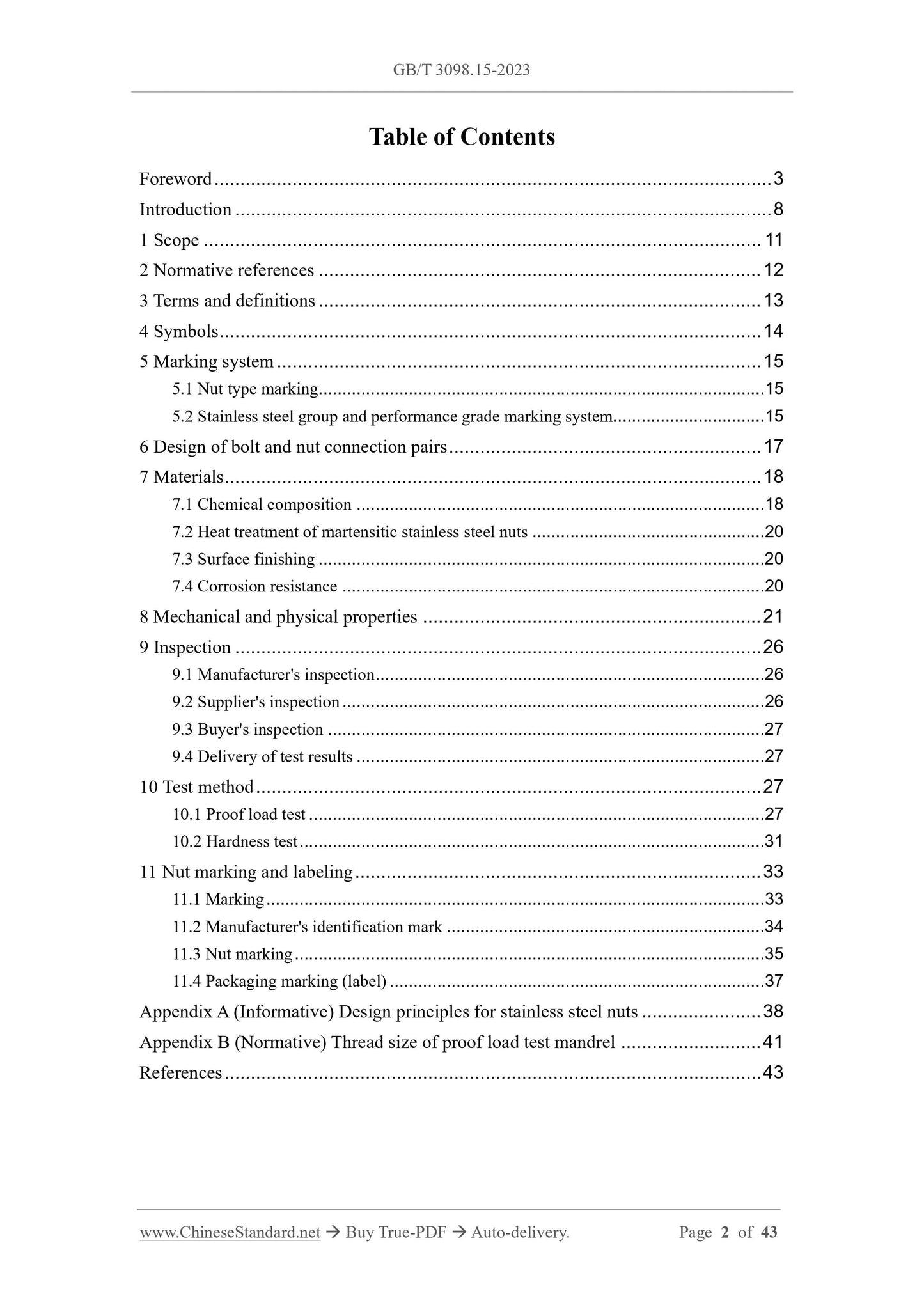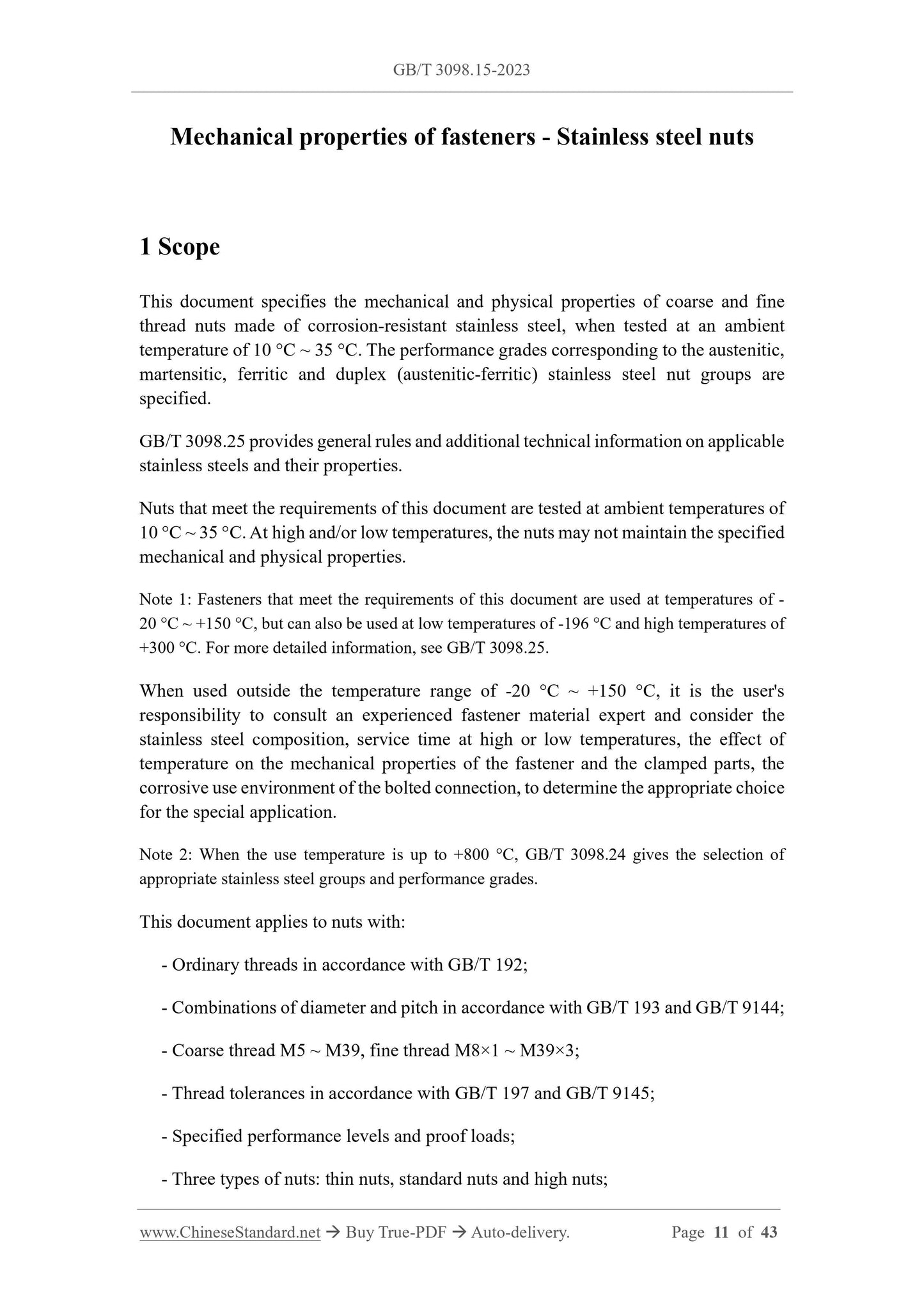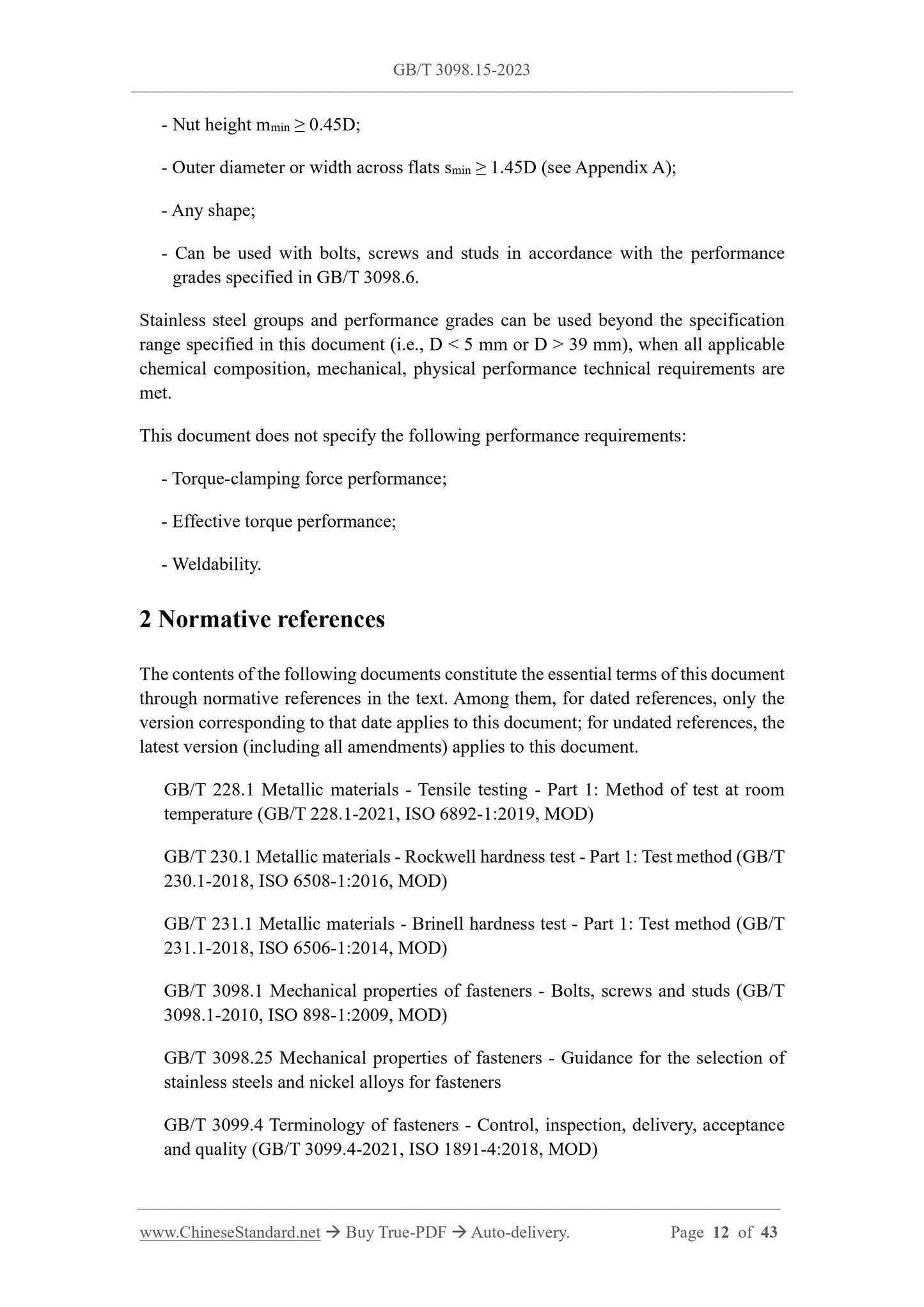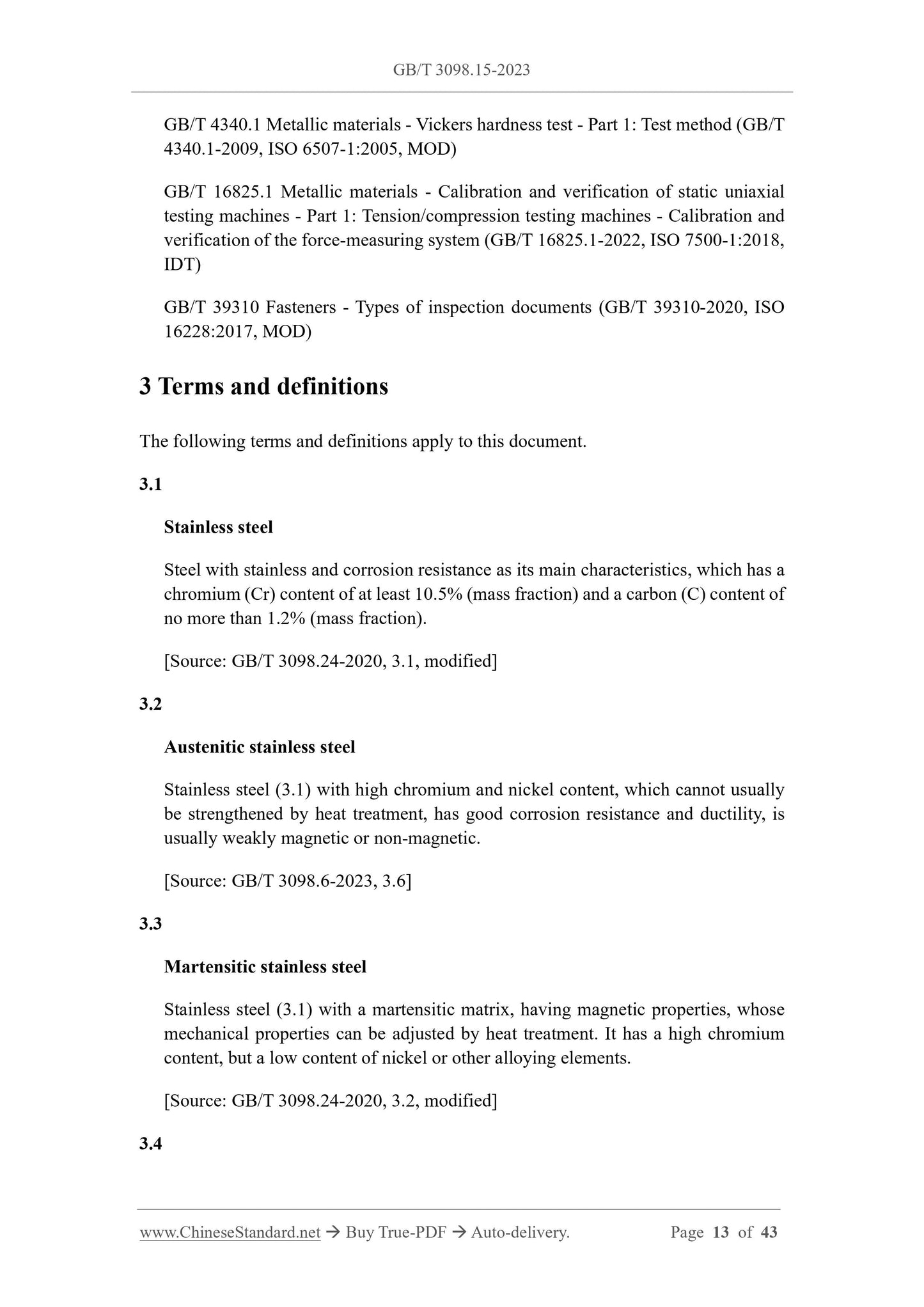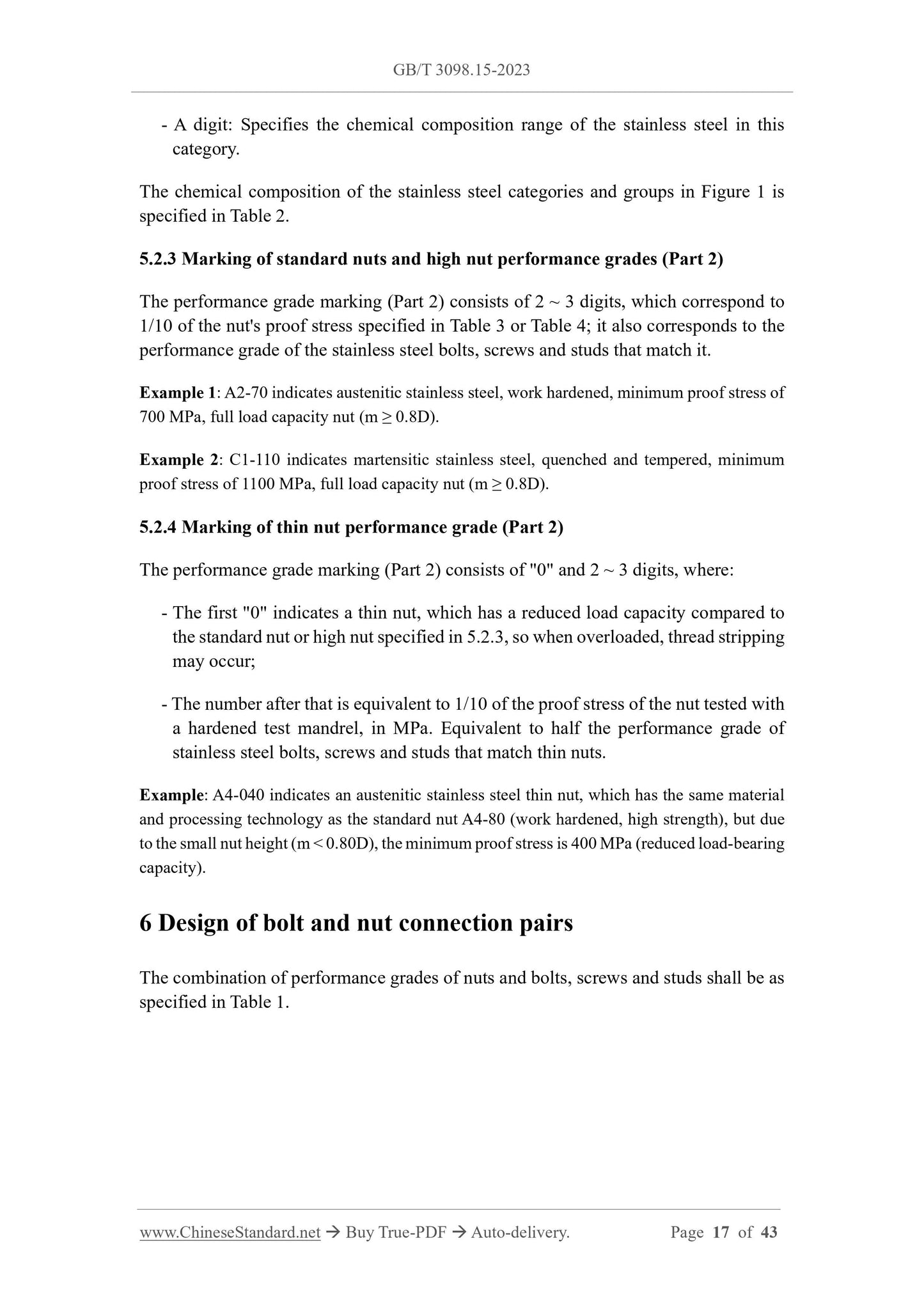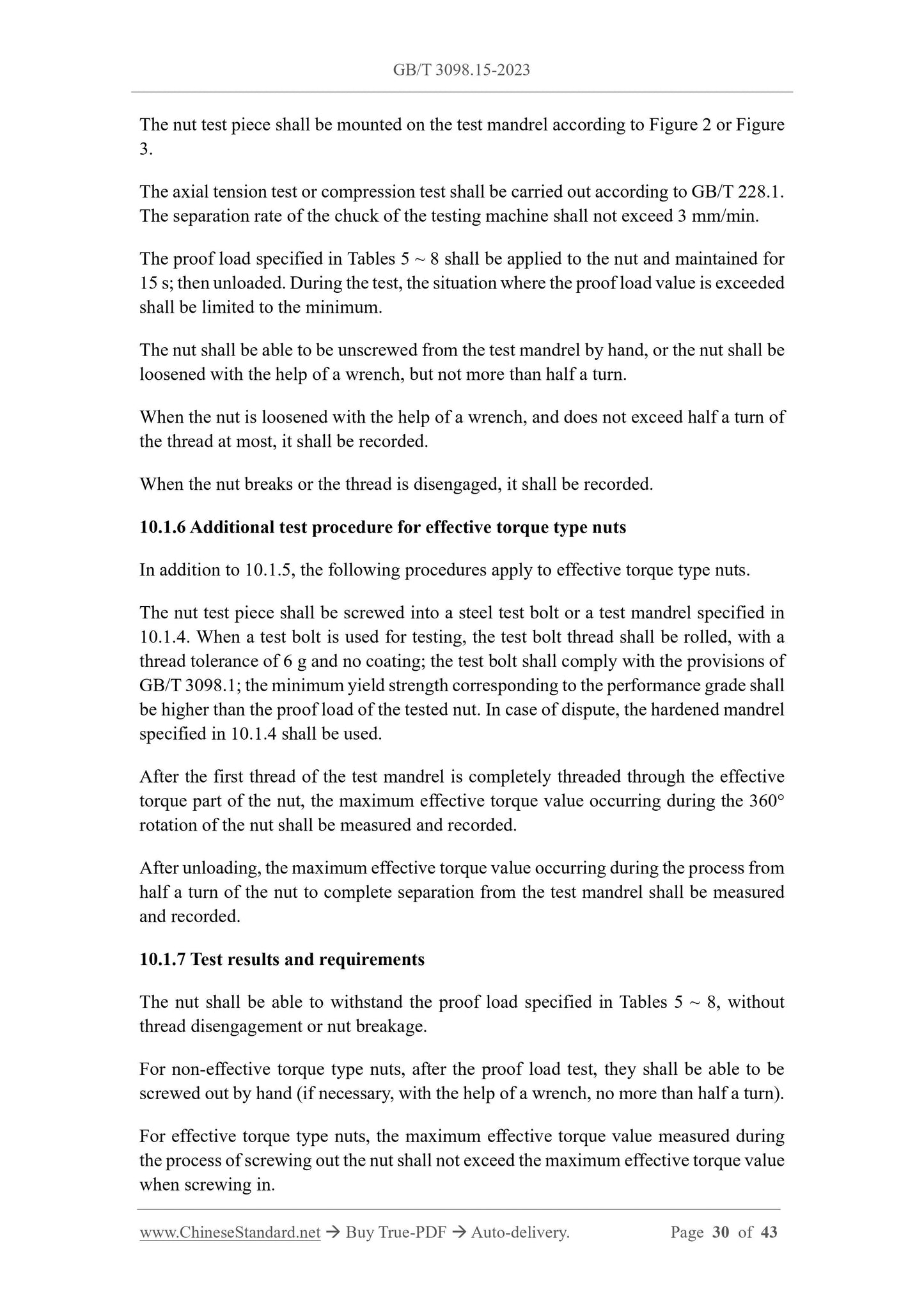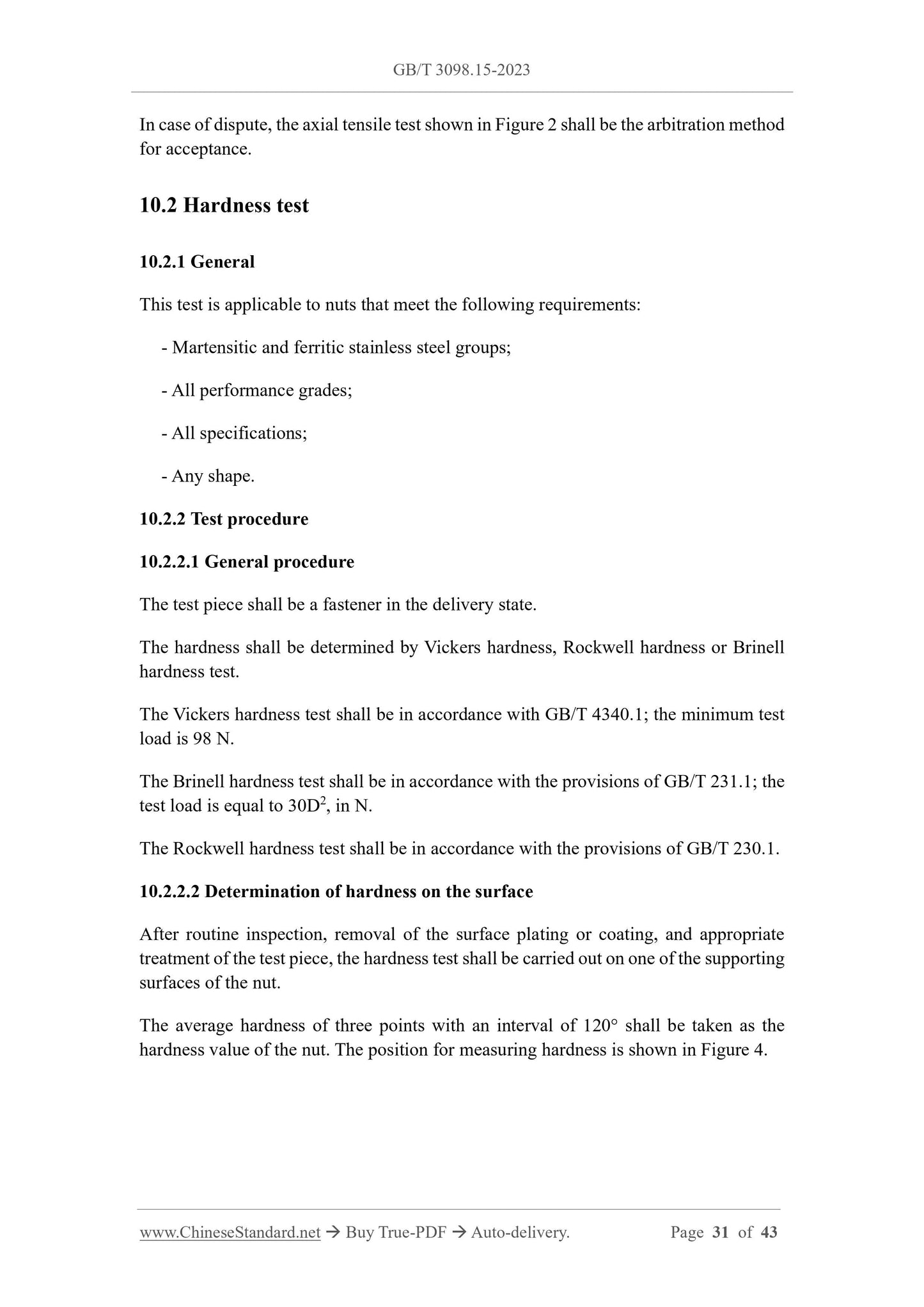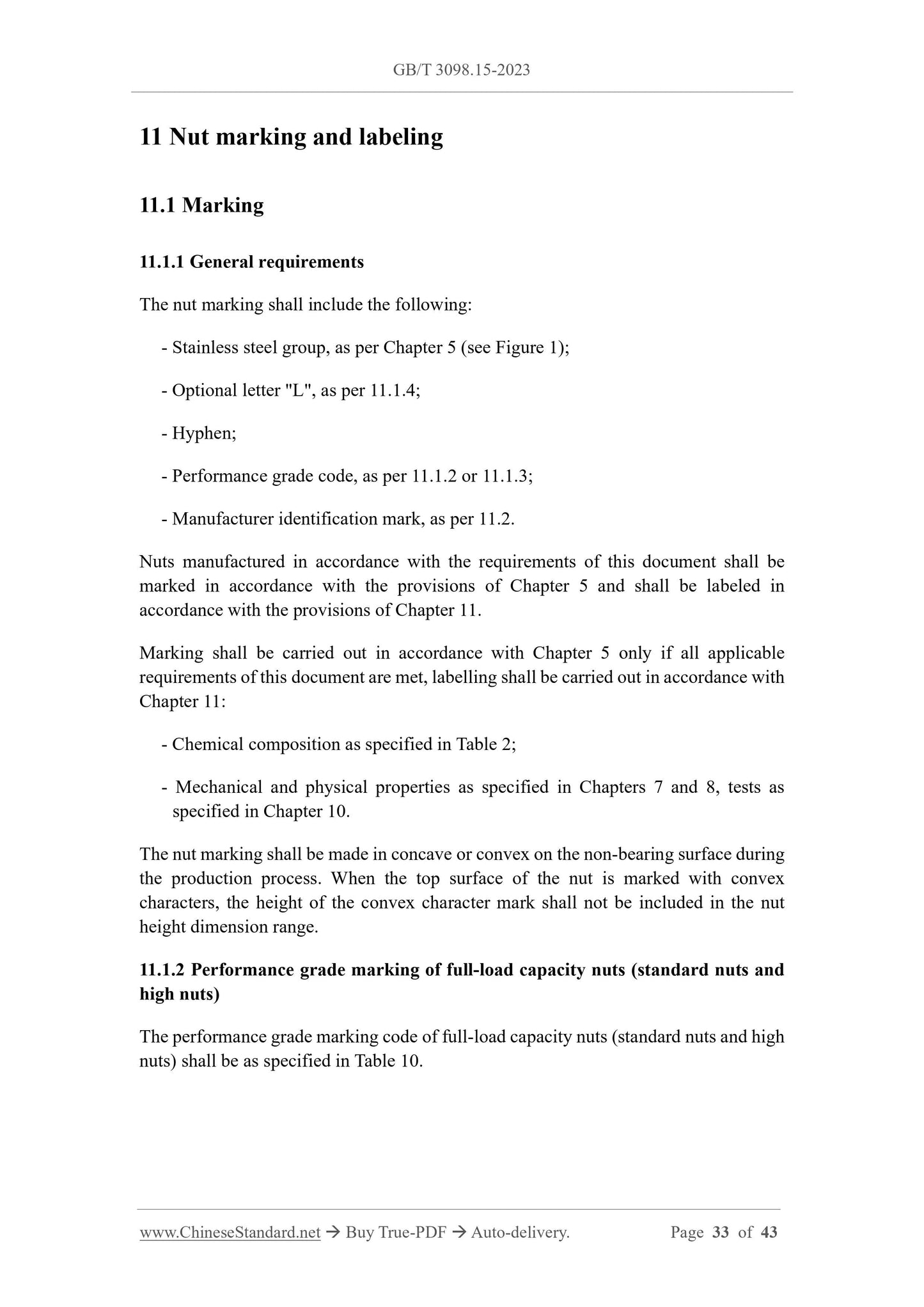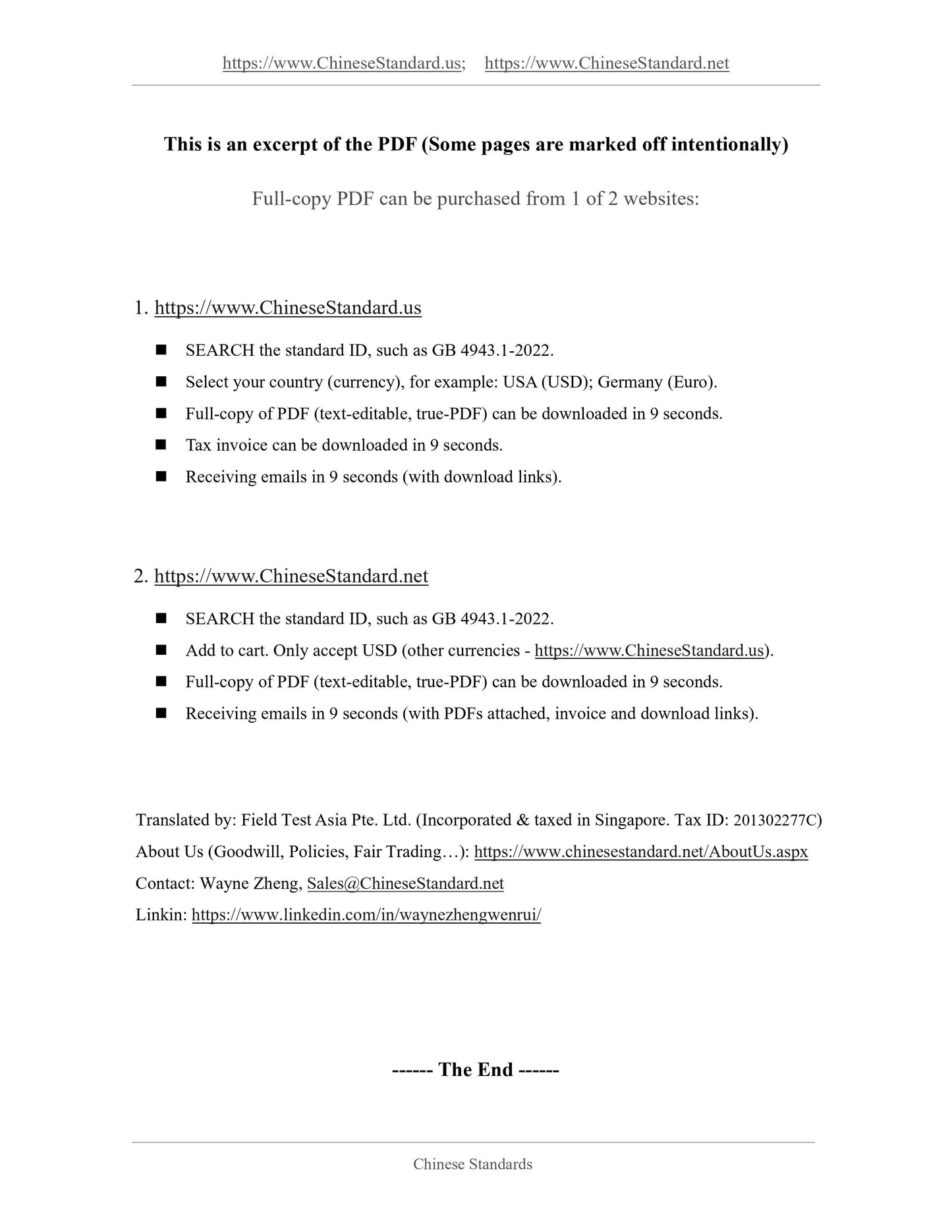1
/
of
12
www.ChineseStandard.us -- Field Test Asia Pte. Ltd.
GB/T 3098.15-2023 English PDF (GB/T3098.15-2023)
GB/T 3098.15-2023 English PDF (GB/T3098.15-2023)
Regular price
$470.00
Regular price
Sale price
$470.00
Unit price
/
per
Shipping calculated at checkout.
Couldn't load pickup availability
GB/T 3098.15-2023: Mechanical properties of fasteners - Stainless steel nuts
Delivery: 9 seconds. Download (and Email) true-PDF + Invoice.Get Quotation: Click GB/T 3098.15-2023 (Self-service in 1-minute)
Newer / historical versions: GB/T 3098.15-2023
Preview True-PDF
Scope
This document specifies the mechanical and physical properties of coarse and finethread nuts made of corrosion-resistant stainless steel, when tested at an ambient
temperature of 10 °C ~ 35 °C. The performance grades corresponding to the austenitic,
martensitic, ferritic and duplex (austenitic-ferritic) stainless steel nut groups are
specified.
Basic Data
| Standard ID | GB/T 3098.15-2023 (GB/T3098.15-2023) |
| Description (Translated English) | Mechanical properties of fasteners - Stainless steel nuts |
| Sector / Industry | National Standard (Recommended) |
| Classification of Chinese Standard | J13 |
| Classification of International Standard | 21.060.20 |
| Word Count Estimation | 32,365 |
| Date of Issue | 2023-05-23 |
| Date of Implementation | 2023-12-01 |
| Older Standard (superseded by this standard) | GB/T 3098.15-2014 |
| Issuing agency(ies) | State Administration for Market Regulation, China National Standardization Administration |
Share
